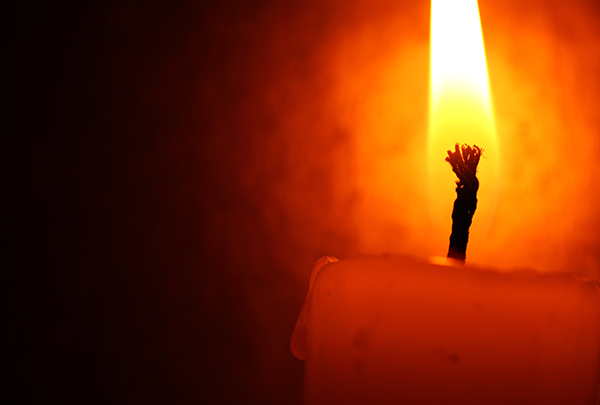
It’s likely you’ve heard the phrase, “Where there’s smoke, there’s fire.” But where there’s fire, there may also be soot stains. Soot stains in your home can range from a dense black layer that covers the exterior of your fireplace to a faint discoloration on walls or ceilings.
Soot stains may be something that you notice right away, like those following a large amount of smoke billowing from your fireplace. Soot stains can also build up over time, so they may not be noticeable right away. After a while, you can tell that things aren’t as bright as they used to be and the culprit isn’t dim lighting!
What Is Soot?
The term “soot” refers to the dark particles left behind after incomplete combustion. Carbon is the main component of soot, which is what lends to the black color of soot stains in your home. Dry and flaky with a disagreeable odor, soot stains can be an eyesore but also lead to health issues. Some may experience breathing problems while other issues and chronic conditions like cancer or lung disease are also a possibility. It’s easy to see why it’s a good idea to avoid soot stains in your home.
What Increases the Chances of Soot Stains?
For Gas Fireplaces
You may not suspect gas fireplaces as a cause of soot stains, but poor airflow can be a major cause of sooting. When a fireplace – even a gas one – isn’t properly vented, the lack of airflow prevents smoke and the byproducts of combustion from being directed safely out of your home.
Similarly, a lack of cleaning or proper care can result in clogged burners. When the burners are clogged, uneven burning can result. This uneven burning will lead to soot and soot stains. Additionally, when gas fireplace logs aren’t positioned correctly, they won’t burn evenly. This is another situation that leads to soot stains.
For Wood Fireplaces/Stoves
Poor airflow problems can also happen with wood-burning appliances and fireplaces. Several factors can contribute to airflow problems, the first being issues with your flue. Another issue that can cause problems with venting smoke is poor air pressure in the home.
Finally, keep in mind that what you burn matters. If you burn unseasoned wood or trash, the result is a lot of smoke which can leave significantly more soot behind. Want to avoid soot stains in your home? Burn properly seasoned firewood which burns cleaner and more completely.
Soot Stains May Not Be from Your Fireplace!
You may be surprised to learn that not all soot stains come from the fireplace. Although candles are used for decoration and give off a warm, cozy glow, they can also be a common source of soot stains. Candles may seem too small – especially in comparison to a large fireplace - to cause major soot stains. But candles of any size can produce soot.
You may be thinking, “But I love how good my house smells when I burn a candle!” However, the chemical additives in the wax, like coloring and scents, can contribute to making them the primary source of soot stains around your home. According to an Esurance statement about candles, “The fragrance or aromatherapy oils used in scented ones create more soot.” If you’re burning candles to cover up the smell of your fireplace, then an inspection and cleaning may be long overdue.
Another factor with candles and soot stains is not putting them out properly. Blowing out a candle significantly increases the likelihood of them causing soot stains. Always use a candle snuffer or put the lid on the candle to starve it out. Also, be sure to keep the wick trimmed. Have you ever seen soot stains coating the inside of a jar-type candle? Long, untrimmed wicks can cause an abundance of soot stains – not only inside the candle jar but on your walls and ceilings as well.
Fireplaces and candles are two major sources of soot stains, but furnaces, ovens, and smoking can also contribute to soot stains. Remember that even the carbon from an attached garage can lead to unsightly soot stain buildup over time.
How to Avoid Soot Stains
Regular Chimney Inspections Are a Must
If your gas or wood-burning appliances are causing soot, it is a sure sign that a chimney inspection is in order. Often, the easiest solution for soot stains is a thorough cleaning that can restore proper airflow to the appliance and flue. Once proper airflow is restored, the soot stains should cease to accumulate.
Although soot stains are a problem that is not generally a source of immediate danger, when it comes to appliance maintenance – fires, carbon monoxide poisoning, and other risks can be caught early with regular inspections and cleaning. So, if you notice soot stains, it’s a good indication that you are due - or overdue - for an inspection.
Only Burn Seasoned Wood
There’s no way to completely avoid soot when you use your fireplace since everything you burn leaves behind some amount of carbon byproduct. However, burning properly seasoned wood produces better heat with long-burning fires. It also produces the least amount of smoke and soot, thereby reducing your chances of soot stains.
When you burn wet or “green” wood, it’s almost guaranteed that you will end up filling your home with smoke. This will potentially result in a lot of soot stains. Whenever you burn anything that isn’t seasoned wood – like rubber, plastic or even treated construction wood, it’s dangerous. The threats range from excessive smoke to dangerous, cancer-causing chemicals in the air. The best way to prevent soot stains and other unsightly and unhealthy issues is to steer clear of burning anything other than properly seasoned wood.
Schedule an Inspection of Your Chimney Today!
Our CSIA Certified Chimney Sweeps will inspect your fireplace and chimney to make sure your chimney liner is in excellent condition, or to schedule an appointment to install a new liner if necessary! Contact us today! We’ll get you set up right away so you can have peace of mind.
Call Us: 1-800-438-3583
Email Us: office@drflue.com
Office Hours: Mon-Fri: 8am-4pm
Connect with Doctor Flue on Social Media

